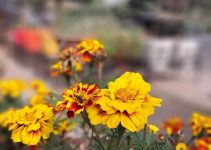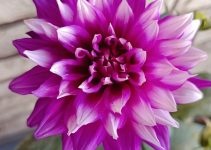Chives
Allium schoenoprasum
Chives grace the garden with bright green stems and pinkish-purple pom-pom blooms — all of which offer a distinctly mild onion flavor. Versatile and easy-growing, chives thrive in containers and also form an eye-catching edging in planting beds. Place chives with convenient harvest in mind; a pot near the kitchen door keeps garden-fresh flavors close at hand. After chives flower, cut plants to encourage new growth, trimming a portion of the clump at a time. In wintry regions, as the growing season winds down, dig up a few bulbs to tuck in a pot for on a sunny windowsill.
Light: Part sun, Sun
Type: Herb, Perennial
Height: 1 to 3 feet
Width: 8-12 inches wide
Flower color: Blue, Pink
Seasonal features: Spring bloom, Summer bloom
Problem solver: Deer resistant
Special features: Attracts Birds, Fragrance, Good for containers. Low Maintenance
Zones: 3-10
Chives Planting and Care
Plant chives in full sun; plants will survive in partial shade, but the mounds will not be as full.
For quickest results, start with purchased plants or transplants and set them out in the garden in early spring. In the lower and Gulf South, plant chives in fall for a winter harvest.
You can also grow chives from seed, but it will take a year to produce a clump large enough to use. Sow seeds directly in the garden after the last frost. When seedlings are about 3 inches tall, thin them to 8 inches apart.
Chives like rich, well-drained soil with a pH of 6.0 to 7.0. Add a slow-release fertilizer to the soil before or during planting. Keep faded blooms pinched back to promote leaf growth. If you harvest often, fertilize plants every two weeks with a balanced liquid fertilizer diluted according to label directions. About every three to four years, divide the clumps in early spring or after flowering, as the bulbs can become too crowded.
Harvesting, Storing and Using Chives
Harvest chives as you need them. In the Gulf South, it is especially important to harvest often to encourage new growth. Rather than shearing the entire plant, select leaves from the outside of the clump and cut each one about 1/2 inch above soil level. Cutting them higher may leave unsightly brown stubs.
If you have more chives than you can use at the moment, chop fresh leaves and freeze them in water in ice cube trays. Infuse oils with fresh chives or preserve the herbs in butters and vinegars.
Add chives to dishes at the end of the cooking process, as their mild flavor can be destroyed by heat. Chives are excellent in egg dishes, potatoes, sauces, and with vegetables. Garnish cold soups and salads, including garden, pasta, and potato salads, with the leaves and blooms of garlic chives.


